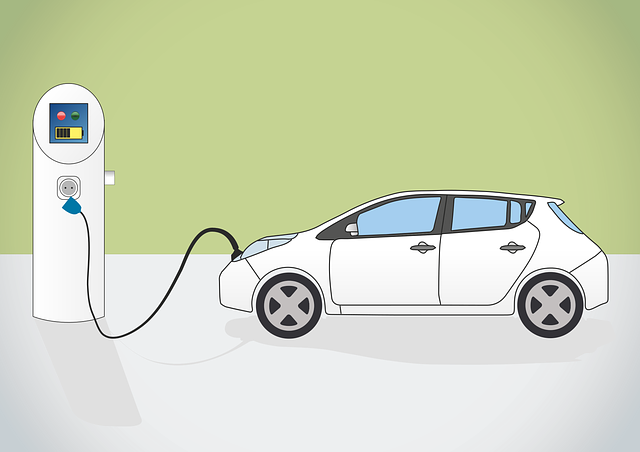Looking to register your car in California? This comprehensive guide breaks down the process step-by-step. From understanding essential requirements to securing your unique California registration plate, we cover it all. First, grasp the state’s car registration mandates, then gather crucial documents for a precise VIN (Vehicle Identification Number) verification. After passing inspection, submit your application and fees at a DMV office. Once approved, pick up your new California plates. Let’s navigate this process smoothly!
- Understand California Car Registration Requirements
- Gather Necessary Documents for VIN Verification
- Perform Vehicle Identification Number (VIN) Check
- Submit Application and Fees to DMV
- Receive Your California Registration Plate
Understand California Car Registration Requirements

Before registering your car in California, it’s crucial to understand the state’s specific requirements. One key aspect is ensuring that your vehicle has undergone a valid Vehicle Identification Number (VIN) verification process. This step is essential for establishing the authenticity and history of your car. In California, a VIN inspection confirms that the vehicle matches its listed details, preventing fraud and ensuring safety standards.
A mobile VIN inspection or using a trusted mobile vin verifier can streamline this process. These services allow you to verify your car’s VIN in real-time, making it easier to navigate the registration procedure. By completing this step, you’ll have one less hurdle when registering your vehicle with the California Department of Motor Vehicles (DMV).
Gather Necessary Documents for VIN Verification

Before heading to the California Department of Motor Vehicles (DMV) to register your car, make sure you have all the required documents for a successful vin verification. This process is crucial and often referred to as vin inspection, ensuring that your vehicle’s unique identifier—the Vehicle Identification Number (VIN)—is accurate and matches the data in their records.
Gather important paperwork such as the title or registration certificate from your previous state, if applicable, and proof of insurance. Additionally, you’ll need a valid driver’s license and perhaps other identification documents. For a smoother process, consider arranging for a mobile vin verification service to ensure all details are in order before visiting the DMV, saving you time and effort.
Perform Vehicle Identification Number (VIN) Check

Before registering your car in California, it’s crucial to perform a Vehicle Identification Number (VIN) check. This step is essential for ensuring that the vehicle you’re planning to register is legitimate and has not been reported as stolen or had its identity altered. A VIN verification process helps authorities track vehicles across the state and prevents fraud.
You can conduct a VIN inspection through various methods, including a mobile vin verification service. These services allow you to quickly check the VIN online or via a mobile app, saving you time and effort. Alternatively, you can visit a local DMV office for a more traditional vin inspection. Regardless of the method chosen, having this information upfront streamlines the registration process and ensures a smoother experience when registering your car in California.
Submit Application and Fees to DMV

To register your car in California, you’ll need to submit an Application for Title and Registration (Form DV304) along with the required fees to the Department of Motor Vehicles (DMV). Before submitting your application, ensure all documents are in order and accurate. This includes providing a valid Vehicle Identification Number (VIN) verification, which can be done through a mobile VIN verifier or inspection service for added convenience. These services allow you to obtain the necessary information from your vehicle’s VIN remotely, streamlining the registration process.
When submitting your application, include the appropriate fees for vehicle registration and any additional charges applicable to your vehicle type. You can typically pay these fees online or in person at a DMV office. Once your application is processed, the DMV will issue you a California vehicle title and register your car, enabling you to legally operate it on state roads.
Receive Your California Registration Plate

After successfully passing the smog test, the next step is to receive your California registration plate. This process typically involves visiting a local Department of Motor Vehicles (DMV) office or, for added convenience, utilizing a mobile vin verification service. If you opt for the latter, a mobile vin inspection specialist will visit your location, perform a thorough vehicle inspection, and verify your Vehicle Identification Number (VIN). This ensures that all components of your car meet California’s safety and emission standards.
Once your VIN is verified, you can proceed to choose your desired registration plate design and submit the necessary paperwork. The DMV will then issue your unique California registration plate, which will need to be securely mounted on your vehicle. With this final step complete, your car is officially registered and ready to hit the bustling California roads.
Registering a car in California involves understanding state requirements, gathering essential documents, and completing a VIN verification process. By following these steps—from ensuring you meet all criteria to obtaining your new registration plate—you’ll navigate the process smoothly. Remember, accurate VIN verification is key to adhering to California’s strict regulations, so take the time to ensure every detail is correct. With these simple steps, you’ll be cruising down California’s highways in no time, legally and confidently.
